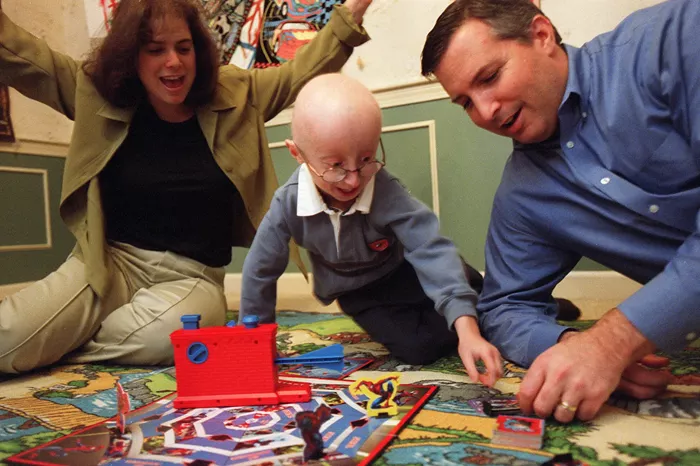A potential breakthrough in treating the ultrarare disease progeria, which accelerates aging in children and significantly shortens their lives, may be on the horizon. Historically, there has been no highly effective treatment for this condition. However, a dedicated team of academics and government scientists, including Dr. Francis Collins, former director of the National Institutes of Health (NIH), is working on an innovative gene-editing technique aimed at halting progeria, with no expectation of financial gain.
If successful, this gene-editing approach could pave the way for treatments of other rare genetic diseases that currently lack cures or attract little interest from pharmaceutical companies. Following 25 years of research, the team is now approaching manufacturers and preparing to seek regulatory approval for clinical trials targeting progeria.
“The project has merit, but also risk,” cautioned Dr. Kiran Musunuru, a gene editing researcher at the University of Pennsylvania. Dr. Musunuru, who advises a gene-editing company, noted that while the technique has shown promise in mice, there is no guarantee it will work in human patients.
Dr. Collins’ interest in progeria began in 1982 during his medical genetics training at Yale University. He encountered Meg Casey, a progeria patient who, despite being in her 20s, appeared much older due to the disease’s effects. Her condition deeply moved Dr. Collins, who lamented the lack of research into the disease, which affects just one in 18 to 20 million people. According to the Progeria Research Foundation, there are only 18 known living patients in the United States, with many succumbing to heart attacks or strokes by their mid-teens.
Nineteen years later, while heading the federal project to map the human genome, Dr. Collins was approached at a party by Dr. Scott Berns, a pediatric emergency room physician whose toddler, Sam, had been diagnosed with progeria. This encounter reignited Dr. Collins’ interest in the disease. He invited Dr. Berns, his wife Dr. Leslie Gordon, a pediatrics resident, and their son Sam to his home, where he discussed the disease and played Frisbee with the boy. Sam lived to age 17.
Dr. Gordon, recognizing the rarity of the disease and the lack of research interest, co-founded the Progeria Research Foundation with Dr. Berns and her sister Audrey, a lawyer, to support promising studies. “There was nothing else,” she said.
Inspired by this encounter, Dr. Collins decided to study progeria despite his administrative responsibilities at the NIH. His lab’s research, combined with advances in gene editing, has made the prospect of a cure seem attainable.
“The new types of gene editing are potentially the answer to a dream we all want to come true,” Dr. Collins said, highlighting that there are roughly 7,000 genetic diseases with known mutations, 85% of which are ultrarare, affecting fewer than one in a million people. Of these, only a few hundred have treatments.
Dr. Collins tasked a new postdoctoral fellow, Maria Eriksson, with finding the cause of progeria. Remarkably, she succeeded in just a few months. The culprit was a single letter change among the three billion letters of human DNA in a gene known as lamin A, resulting in the production of a toxic protein called progerin. This protein disrupts the cellular scaffolding, causing cells to deteriorate and self-destruct.
In 2003, Dr. Eriksson, Dr. Collins, and their colleagues published their findings. Subsequent research involved introducing the lamin A mutation into mice, which then exhibited rapid aging, heart disease, wrinkled skin, hair loss, and early death, mirroring the human condition.
The emergence of CRISPR, a DNA-cutting technology, in 2012, gave the research team renewed hope. CRISPR can slice DNA and disable genes, but what was truly needed was a method to repair genes. The team believes that this bold new treatment approach could finally offer a cure for progeria and potentially other rare genetic diseases.
As they move closer to clinical trials, the scientific community watches with anticipation, hopeful that this innovative gene-editing technique will bring about a significant medical breakthrough.
[inline_related_posts title=”You Might Be Interested In” title_align=”left” style=”list” number=”6″ align=”none” ids=”11086,11083,11065″ by=”categories” orderby=”rand” order=”DESC” hide_thumb=”no” thumb_right=”no” views=”no” date=”yes” grid_columns=”2″ post_type=”” tax=””]

































